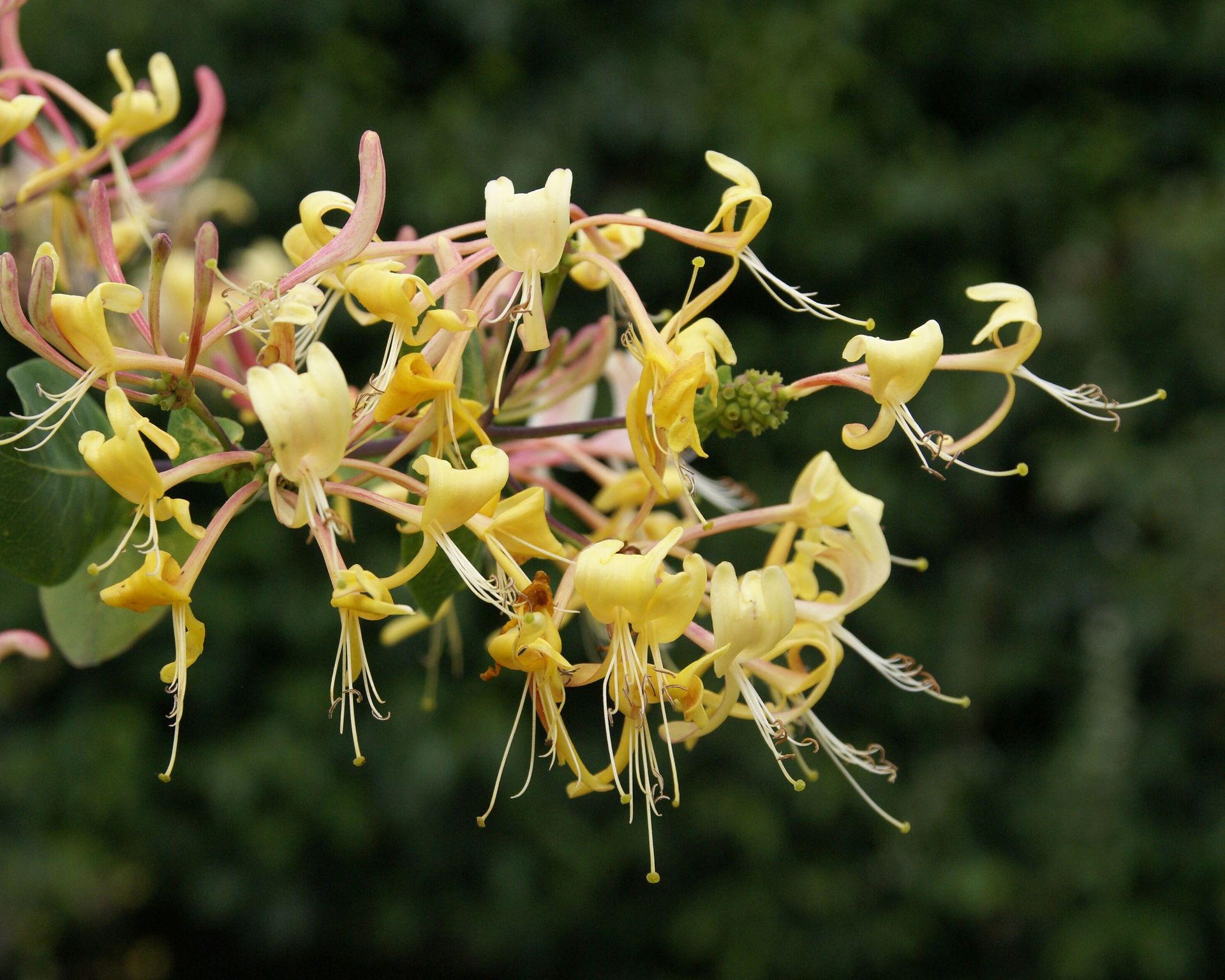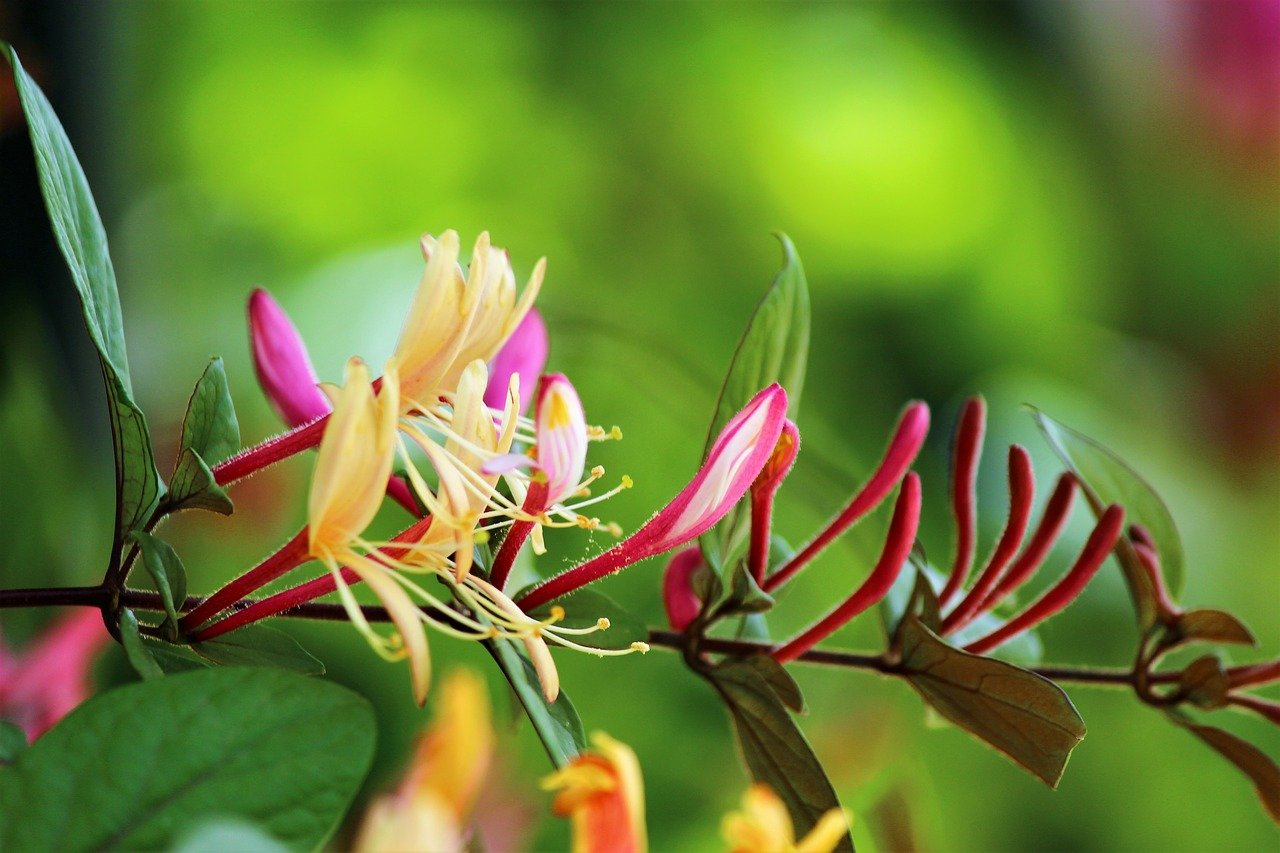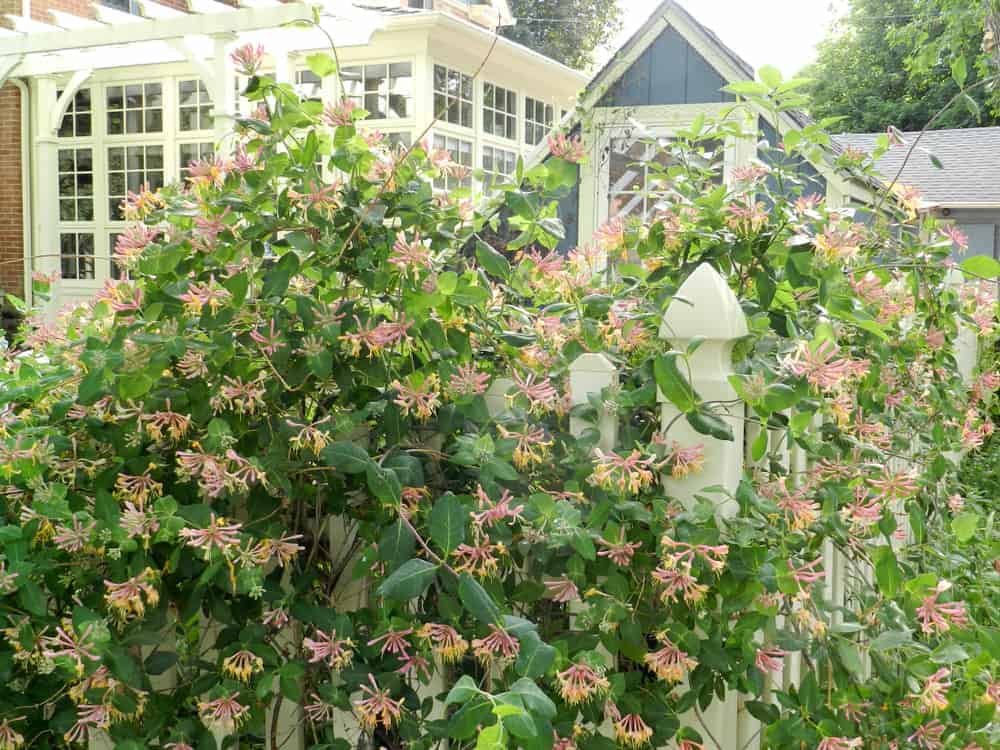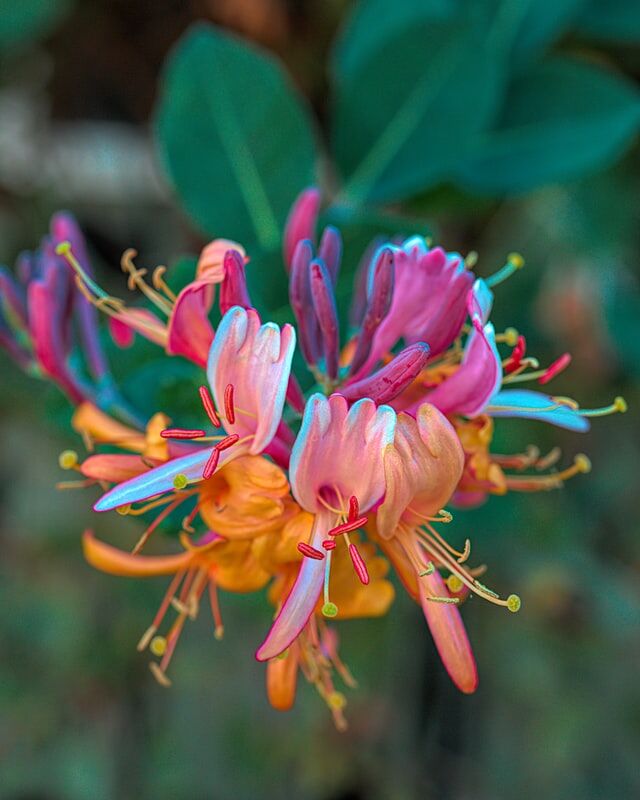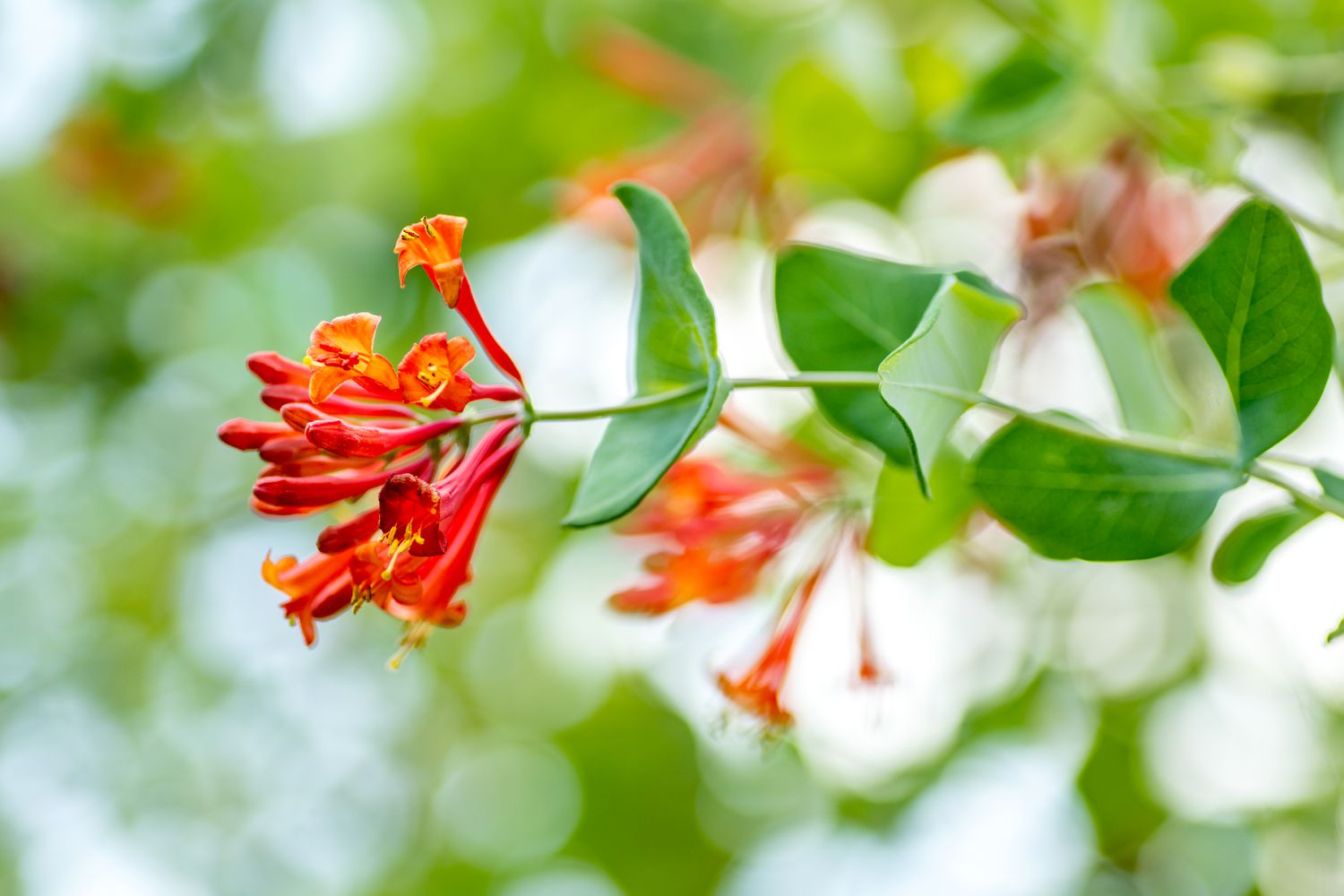Understanding Honeysuckle’s Lighting Requirements
Honeysuckle plants are known for their ability to thrive in a variety of lighting conditions, but they generally require at least partial sunlight to bloom and grow vigorously. While they can tolerate some shade, honeysuckle plants typically need at least 4-6 hours of direct sunlight per day to produce plenty of flowers and fragrance. However, some species of honeysuckle can grow in shadier conditions, making them a great option for gardeners who want to add some beauty and fragrance to their shaded areas.
In fact, honeysuckle plants can grow quite well in shaded areas, especially if they receive dappled or filtered sunlight. This type of light is ideal for honeysuckle plants, as it provides them with the light they need to photosynthesize and grow without scorching their leaves. However, it’s worth noting that honeysuckle plants grown in shaded areas may not produce as many flowers or have as intense a fragrance as those grown in sunnier conditions.
So, can honeysuckle grow in shade? The answer is yes, but it depends on the specific variety of honeysuckle and the amount of shade it receives. Some species of honeysuckle, such as Lonicera sempervirens, can tolerate full shade, while others, like Lonicera japonica, prefer partial shade to full sun. By understanding the lighting requirements of your honeysuckle plant, you can provide it with the right conditions to thrive and enjoy its beautiful flowers and fragrance.
In addition to considering the amount of sunlight your honeysuckle plant receives, it’s also important to think about the quality of the light. Honeysuckle plants prefer bright, indirect light, which is why they often do well in areas with east- or west-facing windows. Avoid placing honeysuckle plants in areas with low, weak light, as this can cause them to become leggy and weak.
By providing your honeysuckle plant with the right amount and quality of light, you can help it grow and thrive in shaded areas. Whether you’re looking to add some beauty and fragrance to your garden or simply want to enjoy the benefits of honeysuckle, understanding its lighting requirements is key to success.
How to Choose the Right Honeysuckle Variety for Shaded Spaces
When it comes to growing honeysuckle in shaded areas, selecting the right variety is crucial for success. While some honeysuckle plants can tolerate full shade, others prefer partial shade or full sun. By choosing a variety that is well-suited to your specific shaded area, you can ensure that your honeysuckle plant thrives and produces plenty of flowers and fragrance.
One of the most popular varieties of honeysuckle for shaded areas is Lonicera sempervirens, also known as coral honeysuckle. This evergreen climber is native to the southeastern United States and can tolerate full shade, making it an ideal choice for woodland gardens or shaded walls. It produces bright red, orange, or yellow flowers in the spring and has a moderate growth rate.
Another variety that does well in shaded areas is Lonicera japonica, also known as Japanese honeysuckle. This semi-evergreen climber is native to Japan and can tolerate partial shade to full sun. It produces white, yellow, or pink flowers in the spring and has a fast growth rate. However, it can be invasive in some areas, so be sure to check local regulations before planting.
Other varieties of honeysuckle that can tolerate shade include Lonicera periclymenum, also known as woodbine, and Lonicera ciliosa, also known as orange honeysuckle. These varieties are both deciduous climbers that produce fragrant flowers in the spring and have a moderate growth rate.
When selecting a honeysuckle variety for your shaded area, be sure to consider factors such as flowering time, fragrance, and growth habit. Some varieties, such as Lonicera sempervirens, produce flowers in the spring, while others, such as Lonicera japonica, produce flowers in the summer. Additionally, some varieties have a stronger fragrance than others, so be sure to choose one that fits your needs.
By choosing the right honeysuckle variety for your shaded area, you can enjoy the beauty and fragrance of these lovely plants all season long. Whether you’re looking to add some color and interest to your garden or simply want to attract pollinators and other wildlife, honeysuckle is a great choice.
Preparing the Soil for Honeysuckle Growth in Shade
Soil quality and preparation are crucial for growing honeysuckle in shaded areas. Honeysuckle plants prefer well-draining, fertile soil that is rich in organic matter. To create an ideal soil environment for your honeysuckle plant, start by testing the pH level of your soil. Honeysuckle plants prefer a slightly acidic to neutral soil pH, ranging from 6.0 to 7.0.
If your soil is heavy clay or sandy, amend it with organic matter such as compost or well-rotted manure. This will help improve the soil’s structure and fertility, allowing your honeysuckle plant to grow and thrive. Additionally, add a balanced fertilizer to the soil to provide essential nutrients for plant growth.
Drainage is also an important consideration when growing honeysuckle in shaded areas. Honeysuckle plants don’t like wet feet, so make sure the soil drains well to prevent waterlogged soil conditions. If your soil is prone to waterlogging, consider raising the bed or adding a layer of organic matter to improve drainage.
In addition to soil pH and drainage, honeysuckle plants also require adequate nutrients to grow and thrive. A balanced fertilizer that contains nitrogen, phosphorus, and potassium (NPK) will provide the necessary nutrients for plant growth. You can also add a high-phosphorus fertilizer to promote blooming and fragrance.
When preparing the soil for your honeysuckle plant, keep in mind that it’s a climbing plant that will need support as it grows. Consider adding a trellis or other support system to the soil to provide a structure for the plant to climb on.
By preparing the soil properly, you can create an ideal environment for your honeysuckle plant to grow and thrive in shaded areas. Remember to monitor the soil conditions and adjust as needed to ensure the best possible growth and flowering.
Can honeysuckle grow in shade? With proper soil preparation and care, the answer is yes. By providing your honeysuckle plant with the right soil conditions, you can enjoy its beautiful flowers and fragrance all season long.
Providing Optimal Care for Honeysuckle in Shaded Areas
Once you’ve selected the right honeysuckle variety and prepared the soil, it’s essential to provide optimal care to ensure your plant thrives in shaded areas. Watering, fertilization, and pruning are crucial aspects of honeysuckle care, and by following these tips, you can promote healthy growth and flowering.
Watering is critical for honeysuckle plants, especially in shaded areas where the soil may be more prone to drying out. Water your honeysuckle plant regularly, but avoid overwatering, which can lead to root rot and other problems. A general rule of thumb is to water your honeysuckle plant when the top inch of soil feels dry to the touch.
Fertilization is also essential for honeysuckle plants, as it provides the necessary nutrients for growth and flowering. Use a balanced fertilizer that contains nitrogen, phosphorus, and potassium (NPK), and apply it according to the manufacturer’s instructions. You can also add a high-phosphorus fertilizer to promote blooming and fragrance.
Pruning is another critical aspect of honeysuckle care, as it helps to promote healthy growth and flowering. Prune your honeysuckle plant regularly to remove dead or damaged branches, and to encourage new growth. You can also prune your honeysuckle plant to control its size and shape, or to promote more blooms.
Monitoring plant health is also essential when growing honeysuckle in shaded areas. Keep an eye out for signs of disease or pests, such as yellowing leaves, black spots, or white powdery patches. If you notice any of these symptoms, take action promptly to prevent the problem from spreading.
By providing optimal care for your honeysuckle plant, you can enjoy its beautiful flowers and fragrance all season long. Remember to adjust your care routine as needed to ensure your plant receives the right amount of water, nutrients, and pruning.
Can honeysuckle grow in shade? With proper care and attention, the answer is yes. By following these tips and providing optimal care, you can enjoy the beauty and fragrance of honeysuckle in even the shadiest of areas.
Common Challenges and Solutions for Growing Honeysuckle in Shade
While honeysuckle can thrive in shaded areas, there are some common challenges to be aware of. One of the most significant challenges is reduced flowering, as honeysuckle plants typically require at least partial sunlight to produce plenty of flowers. However, this can be overcome by selecting a variety that is specifically bred for shade tolerance, such as Lonicera sempervirens or Lonicera japonica.
Another challenge associated with growing honeysuckle in shade is increased susceptibility to disease. Honeysuckle plants are more prone to disease in shaded areas, as the lack of sunlight can create a humid environment that fosters the growth of fungal diseases. To overcome this, make sure to provide good air circulation around your honeysuckle plant, and avoid overwatering, which can exacerbate the problem.
Competition from other plants is another challenge to consider when growing honeysuckle in shade. Honeysuckle plants can be aggressive and may outcompete other plants for resources such as light, water, and nutrients. To overcome this, consider planting your honeysuckle in a container or providing a trellis or other support system to keep it under control.
Finally, honeysuckle plants may require more frequent pruning in shaded areas, as they can become leggy and sparse in low-light conditions. Regular pruning can help to promote healthy growth and encourage more blooms.
By being aware of these common challenges and taking steps to overcome them, you can successfully grow honeysuckle in shaded areas. Remember to monitor your plant’s health and adjust your care routine as needed to ensure optimal growth and flowering.
Can honeysuckle grow in shade? With the right care and attention, the answer is yes. By selecting the right variety, providing optimal care, and overcoming common challenges, you can enjoy the beauty and fragrance of honeysuckle in even the shadiest of areas.
Designing a Beautiful and Thriving Honeysuckle Garden in Shade
Designing a honeysuckle garden in shaded areas requires careful consideration of plant placement, companion planting, and garden aesthetics. To create a stunning honeysuckle garden, start by selecting a variety that is well-suited to your specific shaded area. Consider factors such as flowering time, fragrance, and growth habits when choosing your honeysuckle variety.
Once you’ve selected your honeysuckle variety, consider the overall design of your garden. Honeysuckle plants can be trained to climb up trellises or other supports, making them a great choice for vertical gardens. Alternatively, you can plant your honeysuckle in a container or hanging basket to add a touch of elegance to your shaded area.
Companion planting is also an important consideration when designing a honeysuckle garden in shade. Honeysuckle plants can be paired with a variety of other plants to create a beautiful and thriving garden. Consider pairing your honeysuckle with other shade-tolerant plants such as ferns, hostas, or impatiens.
Garden aesthetics are also an important consideration when designing a honeysuckle garden in shade. Consider the overall color scheme and texture of your garden, and choose plants that complement your honeysuckle variety. For example, if you’re growing a variety of honeysuckle with white flowers, consider pairing it with plants that have dark green or purple foliage to create a striking contrast.
Finally, don’t forget to consider the maintenance needs of your honeysuckle garden. Honeysuckle plants require regular pruning to keep them under control and promote healthy growth. Consider incorporating a maintenance schedule into your garden design to ensure that your honeysuckle garden remains beautiful and thriving throughout the growing season.
By following these tips and considering the unique needs of your honeysuckle variety, you can create a stunning and thriving honeysuckle garden in even the shadiest of areas. Can honeysuckle grow in shade? With the right design and care, the answer is yes.
Maximizing Honeysuckle’s Fragrance and Flowering Potential in Shade
While honeysuckle plants can thrive in shaded areas, they may not produce as much fragrance and flowers as they would in full sun. However, there are several tips and tricks you can use to maximize honeysuckle’s fragrance and flowering potential in shade.
One of the most important factors in promoting blooming and fragrance in honeysuckle plants is light. While honeysuckle plants can tolerate shade, they still need some direct sunlight to produce plenty of flowers and fragrance. If possible, try to provide your honeysuckle plant with at least 2-3 hours of direct sunlight per day.
Temperature is also an important factor in promoting blooming and fragrance in honeysuckle plants. Honeysuckle plants prefer temperatures between 65-75°F (18-24°C) during the day and around 55-65°F (13-18°C) at night. Avoid placing your honeysuckle plant in areas with extreme temperatures, as this can affect its ability to produce flowers and fragrance.
Soil quality is also crucial in promoting blooming and fragrance in honeysuckle plants. Honeysuckle plants prefer well-draining soil that is rich in organic matter. Add compost or well-rotted manure to your soil to improve its fertility and drainage.
Fertilization is also important in promoting blooming and fragrance in honeysuckle plants. Use a balanced fertilizer that contains nitrogen, phosphorus, and potassium (NPK) to promote healthy growth and flowering. Avoid overfertilizing, as this can damage your honeysuckle plant and reduce its ability to produce flowers and fragrance.
Pruning is also essential in promoting blooming and fragrance in honeysuckle plants. Prune your honeysuckle plant regularly to encourage new growth and promote more blooms. Remove any dead or damaged branches, and cut back your honeysuckle plant to maintain its shape and size.
By following these tips and tricks, you can maximize honeysuckle’s fragrance and flowering potential in shaded areas. Can honeysuckle grow in shade? With the right care and attention, the answer is yes.
Conclusion: Growing Honeysuckle in Shade with Confidence
Can honeysuckle grow in shade? With the right care and attention, the answer is yes. By following the tips and guidelines outlined in this article, you can successfully grow honeysuckle in shaded areas and enjoy its beautiful flowers and fragrance.
Remember to choose the right honeysuckle variety for your shaded area, prepare the soil properly, and provide optimal care. With regular watering, fertilization, and pruning, your honeysuckle plant will thrive and produce plenty of flowers and fragrance.
Don’t be discouraged by common challenges such as reduced flowering or increased susceptibility to disease. By troubleshooting and adjusting your care routine as needed, you can overcome these challenges and enjoy a healthy and thriving honeysuckle plant.
Designing a beautiful and thriving honeysuckle garden in shade requires careful consideration of plant placement, companion planting, and garden aesthetics. By incorporating these elements into your garden design, you can create a stunning and fragrant honeysuckle garden that will be the envy of your neighbors.
Finally, remember to maximize honeysuckle’s fragrance and flowering potential in shade by providing the right amount of light, temperature, and soil quality. With these tips and tricks, you can enjoy the full beauty and fragrance of your honeysuckle plant, even in shaded areas.
So, if you’re looking to add some beauty and fragrance to your shaded garden, consider growing honeysuckle. With the right care and attention, you can enjoy the many benefits of this beautiful and fragrant plant.


